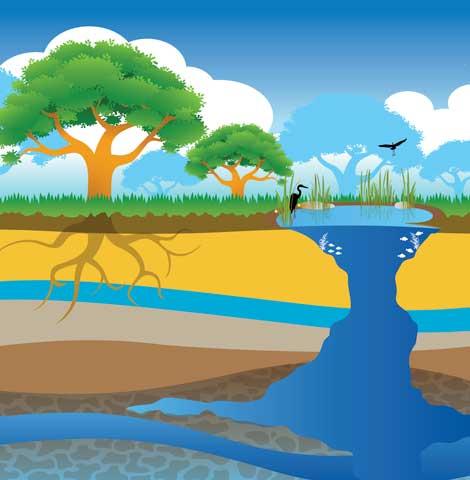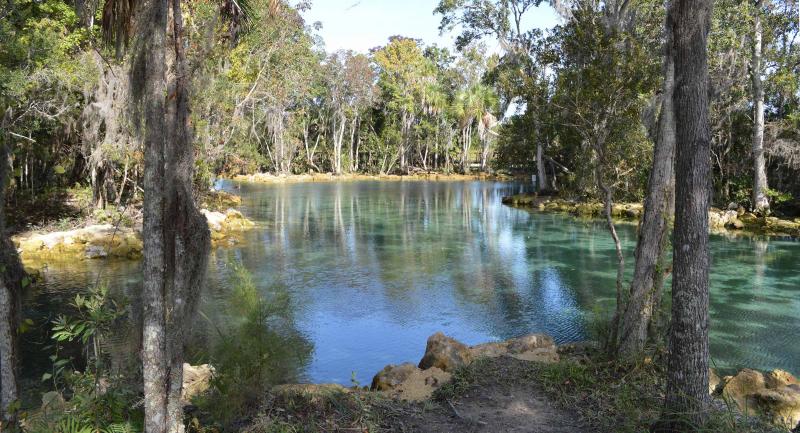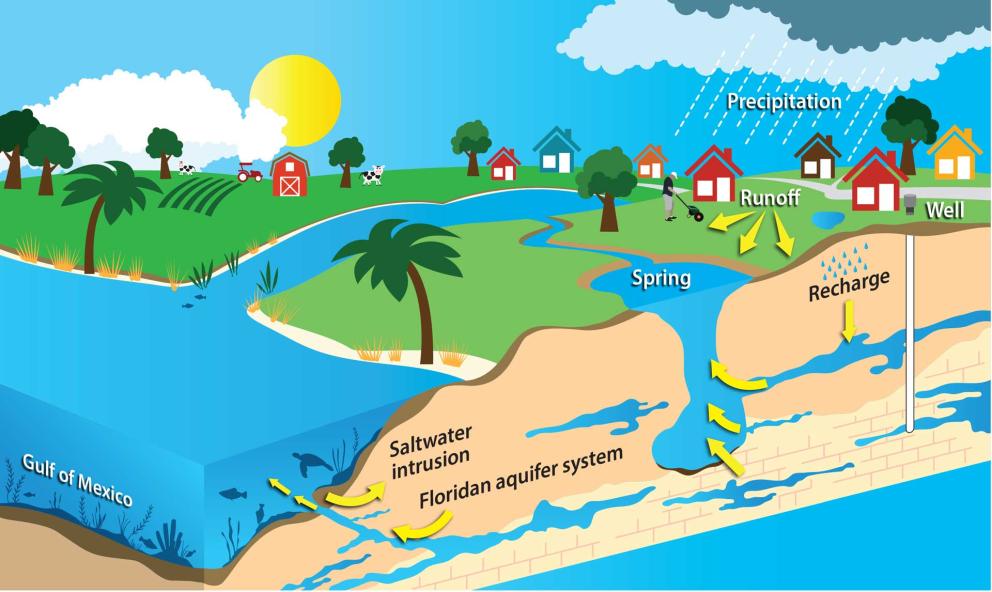A spring is a place where groundwater discharges from the underlying limestone bedrock to the Earth's surface through a natural opening in the ground. In the Springs Coast Watershed, the Floridan aquifer is close to the land surface, which means that the springs are exposed portions of the aquifer!
As windows into the aquifer, springs have long been one of Florida's most valued natural and scenic resources. In 1513, the Spanish explorer Ponce de Leon came to Florida in search of a spring called the Fountain of Youth. Although he never found the Fountain of Youth, he did find other springs. In later years, health spas were built at several springs because of the waters' perceived medicinal value. Today, many of Florida's springs are tourist attractions or parks.

Springs are common in Florida because of the state's "karst" terrain. A karst terrain is a land surface produced when water dissolves rock found beneath the ground.
A spring is only as healthy as its springshed. A springshed is like a watershed, but where a watershed is an area of land that contributes surface water to a water body, a springshed is the area of land that contributes groundwater to a spring. A springshed includes much more than just the land surrounding a spring. For example, the Rainbow Springs Group has a springshed that covers several hundred square miles and extends into three counties. Your actions at home, which may be many miles from a spring, can affect the health of the spring and the water flowing from it.



